Florence, exchange of works between Uffizi and Accademia with three fourteenth-century triptychs
The first consequence of the merger between the Uffizi Gallery and the Accademia Gallery in Florence is an exchange of works: Three fourteenth-century triptychs, one by Jacopo del Casentino (Pratovecchio, c. 1297 - c. 1349) and two by Pacino di Bonaguida (Florence, c. 1280 - c. 1339), are arriving at the via Ricasoli institution, while the Uffizi is receiving in exchange a Christ by Maestro del Crocifisso Corsi, originally at the ancient church of San Pier Scheraggio, the house of worship integrated by Vasari inside the Uffizi and now home to one of the museum’s auditoriums.
The three 14th-century triptychs were until yesterday on display in the Sala delle Maestà on the second floor of the Uffizi along with works by Giotto, Cimabue and Duccio di Buoninsegna. The “cross-over” transfer was made in the morning: thus, the triptychs that arrived from the Uffizi are thus from this afternoon displayed in philological continuity in the Hall of the Thirteenth and Early Fourteenth Centuries in the Accademia Gallery, alongside other masterpieces by Pacino di Bonaguida, including the famous Tree of Life. At the same time, the painted Cross by Maestro del Crocefisso Corsi is now set up in Room 2 on the second floor of the Uffizi along with the three Majesties by Giotto, Cimabue and Duccio di Buoninsegna.
“Too often the Accademia Gallery is perceived only as the museum where Michelangelo’s David is,” explained the director of the Uffizi Galleries, Eike D. Schmidt, "but it is also a very rich repertoire and an authentic manual of Florentine painting of the Middle Ages. Thanks to the transfer of the three portable triptychs from the Uffizi to the Accademia, this collection is enhanced even more, because the art-historical narrative on the so-called ’Masters of the Miniaturist Tendency’ (as Richard Offner first called them) is broadened and deepened considerably. We are therefore pursuing the same strategy of intelligent decentralization that we have successfully employed for the Pitti Palace, and which we intend to extend to the San Marco Museum, one of the most important cultural venues in the world."
“The presence of the painted Cross of the Master of the Crucifix Corsi,” adds Angelo Tartuferi, coordinator of the Accademia Gallery and curator of the Uffizi Galleries’ paintings of the Two and Fourteenth Centuries, “is the only one of the Fourteenth Century at the Uffizi and ideally continues the two spectacular examples of the ’Master of the Cross no. 432’ and the ’Master of the Crucifix No. 434’ in Room 1: in fact, it fills a gap that has persisted at the Uffizi since 1959, when Cimabue’s large cross that was the centerpiece of the post-war set-up of the Majesties room by Michelucci, Scarpa and Gardella, returned to the museum in the Basilica of Santa Croce. Under the same principle of protection now the work of the Maestro del Crocefisso Corsi also returns to the building for which it was created; the ’Christ Crucified’ in fact was painted for the church of San Pier Scheraggio, later incorporated into the Uffizi by Vasari. From 1825 to 1919 the painted cross was displayed in the first corridor of the Uffizi: it is therefore totally unrelated to the collection corpus of the Galleria dell’Accademia, but it is part of the large group of works with Uffizi inventory numbers that from Italian unification until a few years ago were freely exchanged between the Uffizi, Palazzo Pitti and the Accademia, as Luisa Marcucci recalled as early as 1958 in the preface to her still valuable catalog ’Tuscan Paintings of the 13th Century. Let us hope that at the end of the work on the Nuovi Uffizi, when the climatic conditions and full accessibility of the former church of San Pier Scheraggio to the public are created, the work can return to the same sacred space on the ground floor of the Uffizi for which it was originally painted seven hundred years ago.”
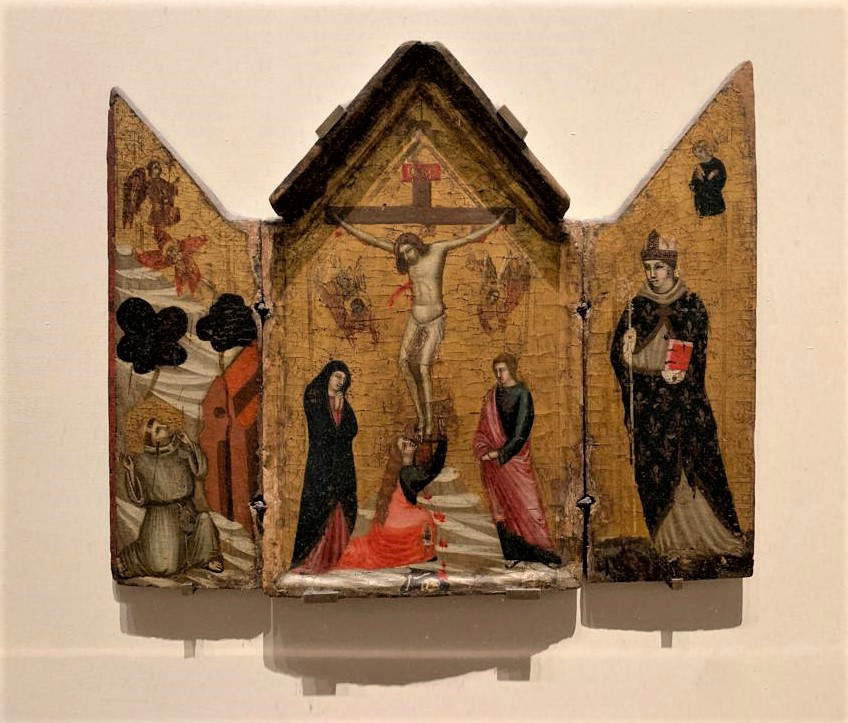 |
| Pacino di Buonaguida and workshop, Crucifixion with St. Mary Magdalene (central compartment); St. Francis (left compartment); St. Louis of Toulouse (right compartment), 1320-1330 |
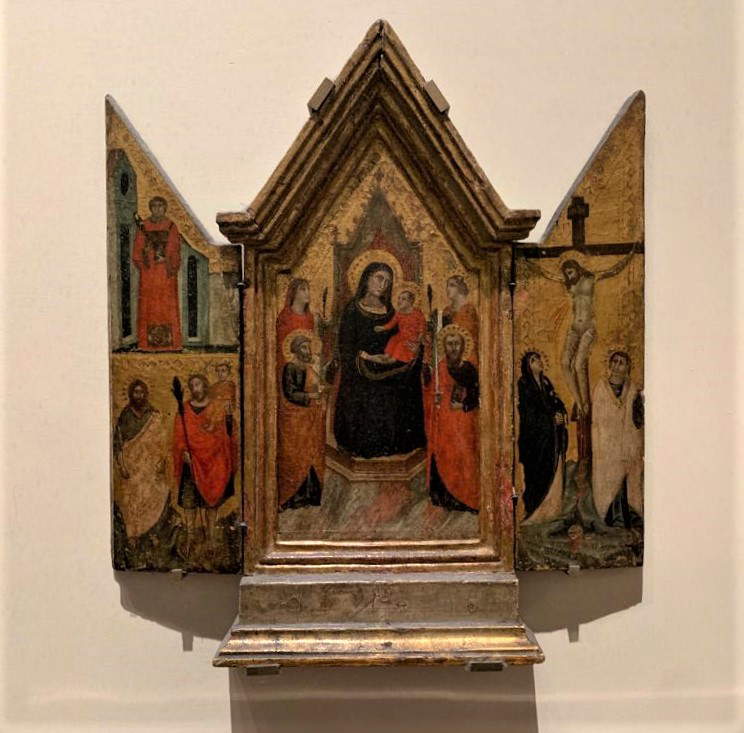 |
| Pacino di Buonaguida and workshop, Madonna Enthroned with Child, two martyred saints, St. Peter and St. Paul; a deacon saint, St. John the Baptist and St. Christopher (left side); Crucifixion with Madonna and St. John the Evangelist (right side), 1320-1330 |
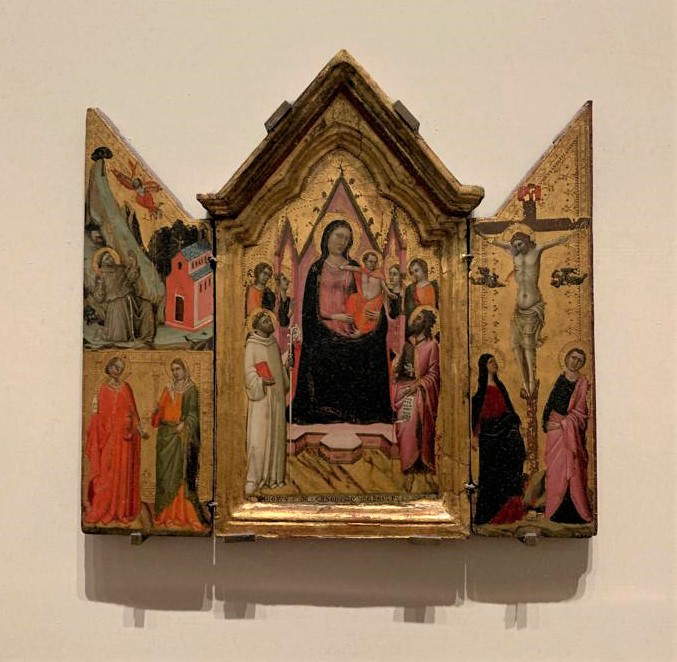 |
| Jacopo del Casentino, Madonna and Child Enthroned between St. Bernard and St. John the Baptist; Stigmata of St. Francis and St. Margaret and St. Lucy; Crucifixion, 1320-25 |
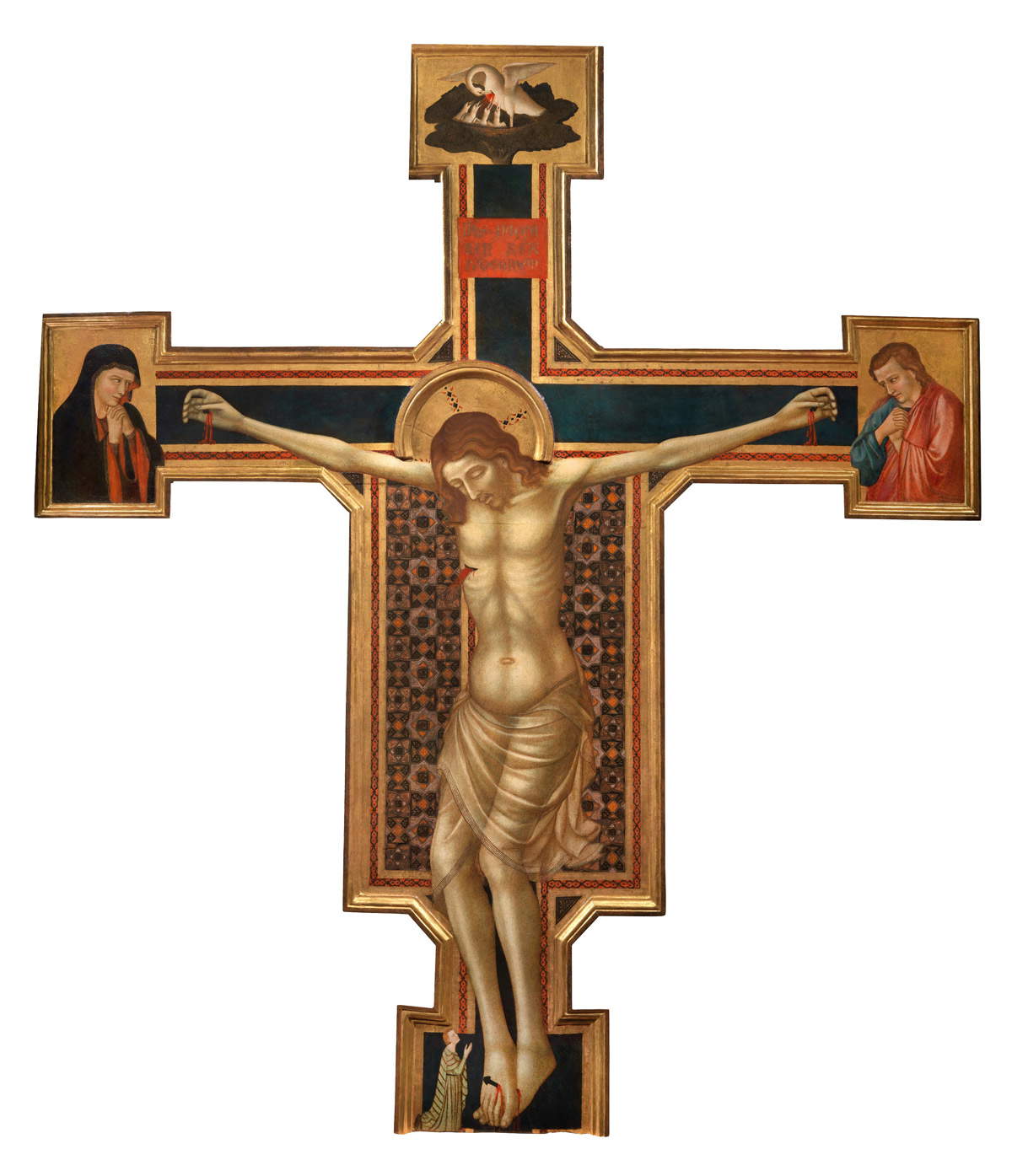 |
| Master of the Crucifix Corsi, Painted crucifix and mourners, c. 1315 |
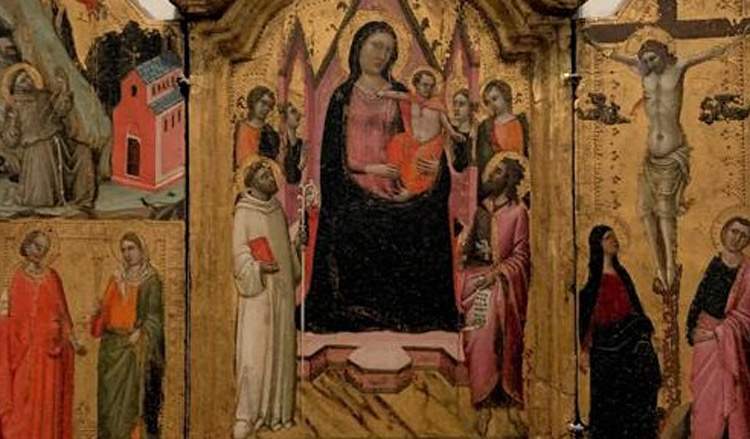 |
| Florence, exchange of works between Uffizi and Accademia with three fourteenth-century triptychs |
Warning: the translation into English of the original Italian article was created using automatic tools. We undertake to review all articles, but we do not guarantee the total absence of inaccuracies in the translation due to the program. You can find the original by clicking on the ITA button. If you find any mistake,please contact us.



























